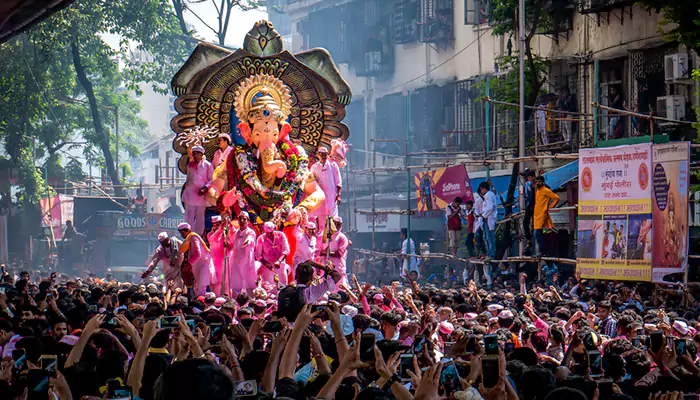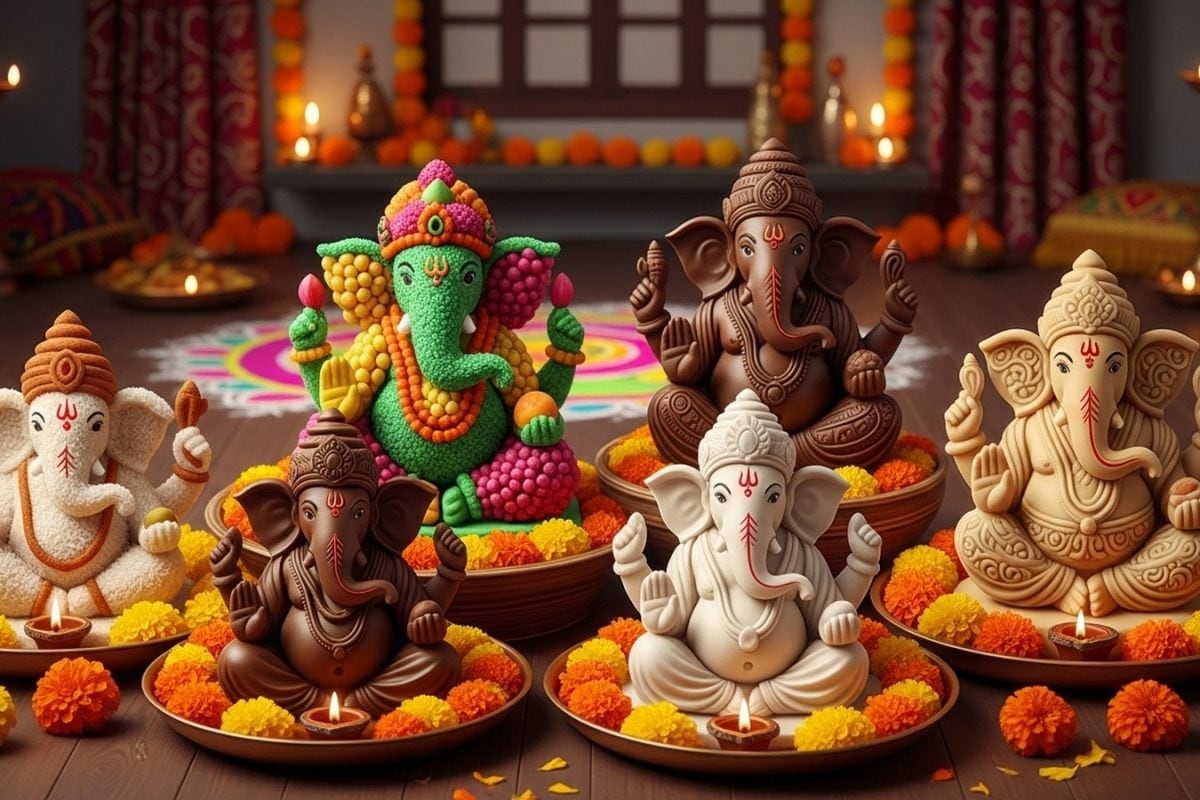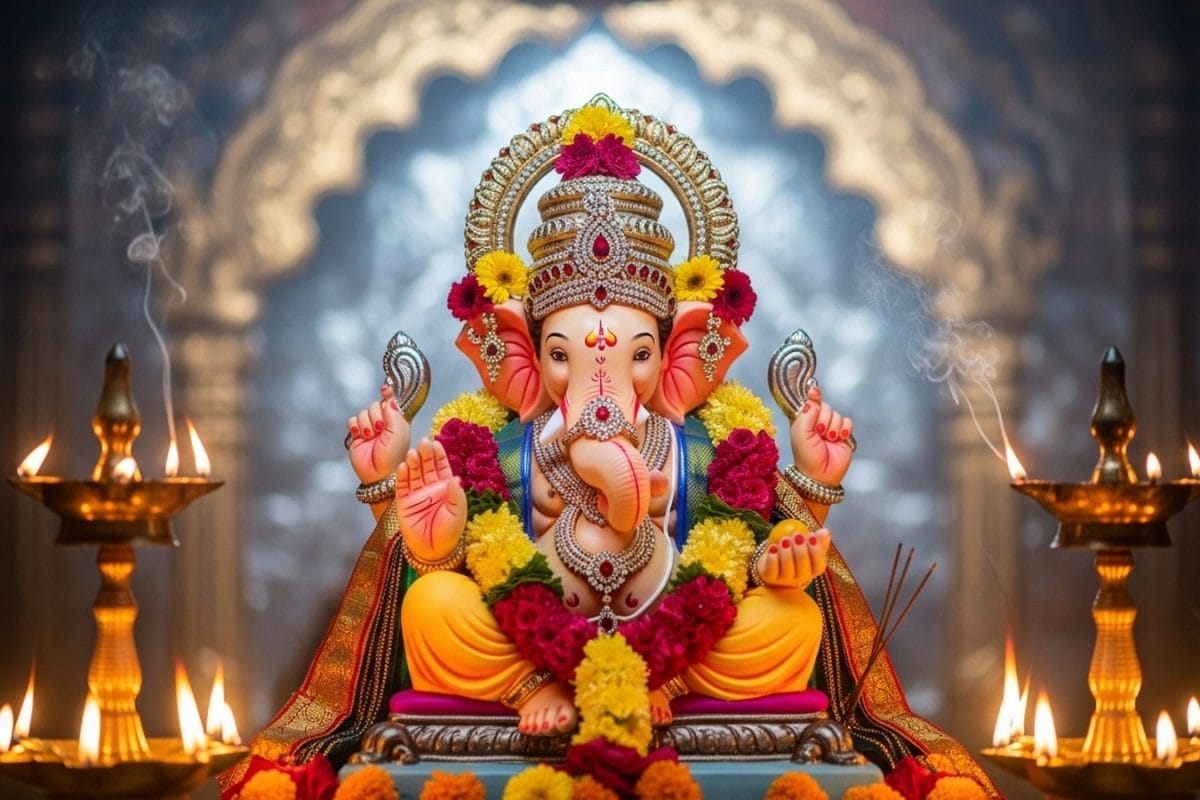This August 27, let devotion meet responsibility with simple, sustainable, and soulful ways to celebrate Lord Ganesha
Imagine the chants of Ganapati Bappa
Morya echoing through the air, children dancing with sparklers, and homes glowing with diyas. Yet beneath the waters where idols are immersed, a darker truth comes to light — rivers clogged with plaster, paints leaching toxins, aquatic life suffocating. Ganesh Chaturthi, one of India’s most joyful festivals, often leaves behind a trail of environmental scars.
However, 2025 presents us with an opportunity to change the course. With increasing awareness, families are reimagining celebrations that combine faith and ecological mindfulness. Here’s how you can make this Ganesh Chaturthi both sacred and sustainable.

Credit: News9
Choosing the right idol
The core of the festival is the idol itself. An eco-friendly Ganesh is not only symbolic but also an act of respect for the natural world. Choose idols made from shadu clay, red soil, cow dung, terracotta, papier-mache, or even banana leaves. These dissolve quickly in water, leaving behind no toxic residues.
Avoid plaster of Paris idols coated with synthetic paints, as they release harmful chemicals into rivers and lakes. Instead, opt for earthy textures and natural, vegetable-based colours. The true test of an eco-friendly idol is how softly it returns to the soil.

Credit: Shopify
Price and accessibility
Eco-friendly does not always mean expensive. While shadu clay idols are slightly pricier, materials like papier-mâché or red soil provide affordable alternatives without sacrificing beauty.
Many local artisans now craft idols in different sizes and styles, making green choices accessible to every household. Supporting them also boosts traditional craftsmanship at a time when mass production often overshadows artistry.
The wider impact
A single clay idol can dissolve within a few hours, while turmeric or sandalwood idols disintegrate even more quickly, leaving no residue behind. In contrast, synthetic idols cause long-lasting pollution, making the choice not just ecological but also ethical. Every household that opts for a clay Ganesha helps promote cleaner rivers and healthier aquatic ecosystems.

Credit: Design Cafe/small>
Creative eco-alternatives
For the adventurous, recycled materials can create unique idols — from cardboard moulds to papier-mâché made from waste paper. These quirky creations reduce landfill waste and add a personal touch to the celebration.
Imagine telling your children that their idol was made from yesterday's newspapers — what better way to teach responsibility through ritual?

Credit: Flat in Kalyan
Green décor that tells a story
Celebration extends beyond the idol. Decorations can be both festive and sustainable if we draw from tradition:
- Old sarees and dupattas as backdrops — rich in colour and heritage.
- Banana and palm leaves for mandap décor — a compostable and naturally elegant choice.
- Recycled cardboard cutouts — a craft activity that unites the family.
- Flower rangolis with turmeric and rice flour — fragrant, biodegradable, and deeply symbolic.
- Upcycled jars and bottles as lanterns — casting a warm glow without plastic waste.
- Such décor not only saves money but also revives the ethos of less is more.

Credit: My Pooja Box
Why it matters
Choosing an eco-friendly celebration is not about renouncing joy but about deepening its meaning. Lord Ganesha, the remover of obstacles, has always symbolised wisdom and foresight.
What greater act of devotion than ensuring that our faith does not become a burden on the very planet that sustains us? This year, let Ganesha arrive in clay, in flowers, in reused fabrics — and let him depart, leaving nothing behind but blessings.












